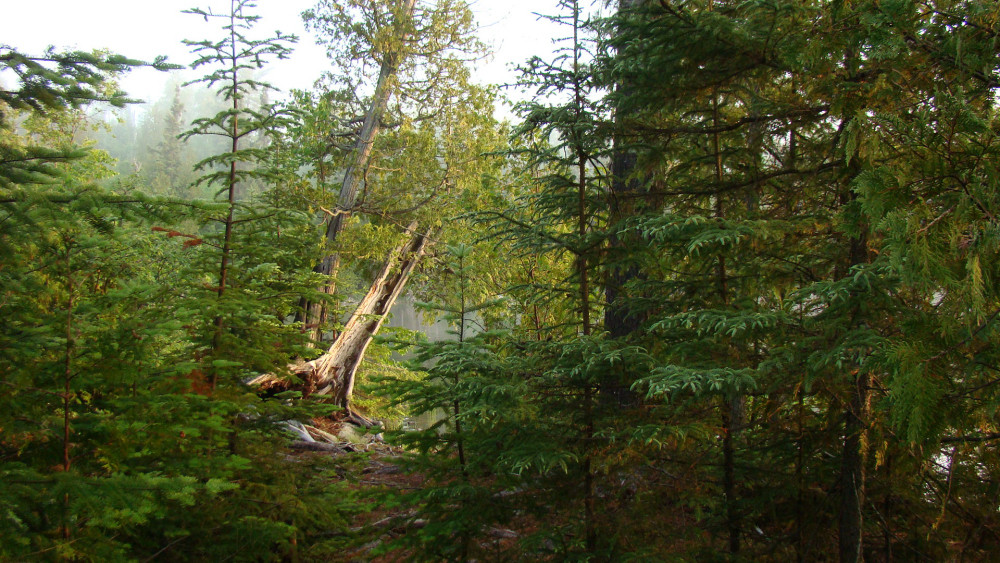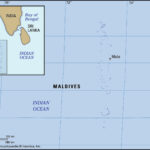Let these woods have their slow way with you. Patient pines that hold their green through all the frozen seasons, lichen-covered rocks that live indifferent to time’s passage— these will teach you how to bring your life to ground.
The fractal chaos of the forest floor, its white anemones, spiked grasses and dead leaves, the fallen trunks and branches splayed out like pick-up sticks— these will teach you how to live freely, with abandon, and feed the roots of new growth when your time has come.
I’m writing this piece from the heart of the Boundary Waters Canoe Area Wilderness (BWCAW) in northern Minnesota, a sprawling sanctuary of a million acres bordering Canada. Years ago, a friend attempted to capture its essence for me, describing it as, “Everywhere you look, there’s a perfect Japanese garden.” Indeed, it is: a seamless blend of rocks, trees, water, and sky, each element contributing to an endless display of natural elegance.
The evening here is idyllic. The day’s heavy warmth has receded, replaced by gentle breezes that stir both the lake below and my thoughts. The setting sun casts a honeyed light across the forest, illuminating the pines and aspens, the undergrowth, bushes, and wild grasses in shades of amber and green, set against what e.e. cummings poetically called a “blue true dream of sky.”
It was in my mid-fifties when I first experienced this haven. Its simplicity, beauty, and profound peace resonated deeply within me, drawing me back every summer for two decades. Initially, it was simply a vacation destination. However, I soon recognized my annual journey to the Boundary Waters as a pilgrimage to a sacred place, a sanctuary for healing.
Throughout the demanding year, when life’s pressures mount, I return to this wilderness in my mind. I visualize hiking through sun-dappled woods, paddling across windswept lakes, hearing the haunting call of the loon, witnessing the ethereal dance of the Northern Lights, or listening to the quiet dialogue between the lake and the land as the clear, cold water gently kisses the shore.
Yet, it’s more than just tranquility that makes this wilderness a place of healing. It’s the enduring, resourceful, and resilient way nature heals itself, offering lessons on how to mend my own wounds and contribute to the world as a source of healing. Observing the wilderness overcome devastation has illuminated how suffering can be the fertile ground for renewal. More importantly, it has provided reassurance that in the grand cycle of life and death, new life invariably prevails.
On July 4, 1999, a derecho – a fierce line of windstorms akin to an inland hurricane – tore through the Boundary Waters. Millions of trees were felled, creating fuel for wildfires that further ravaged the forest in subsequent years. Arriving a month after the derecho for my annual retreat, the sight of the widespread destruction was heartbreaking. I questioned whether I could remain, or if I would want to return the following year. Something compelled me to stay and to keep coming back, offering me the chance to witness nature’s remarkable resurrection.
One of my cherished hiking trails led through a dense, ancient-feeling part of the forest. Knowing that these secluded woods had been severely impacted by the storm and subsequent fires, it was years before I felt ready to revisit that trail. When I finally did, I witnessed how the void left by destruction was being filled with vibrant new life.
Raspberries and blueberries, lupine and purple asters had flourished, bathed in sunlight that had long been obscured by the dense canopy. Aspens sprouted from seedlings, growing with astonishing speed. Today, sixteen years after the derecho, many of those seedlings tower over me. The massive rocks along the trail now resemble raku pottery, fired in the intense heat of the forest fires, glazed with metallic hues of red and brown, blue and gold.
For years, I’ve pondered the timeless question, “How, then, shall we live?” I’ve often found wisdom in the age-old traditions of the world. But now, at 76, as I also contemplate, “How, then, shall we die?”, no path offers more profound guidance than those I’ve walked through the Boundary Waters, my personal window into heaven, offering a unique perspective on Where Do We Go When We Die.

Image of a serene lake surrounded by a forest under a cloudy sky, illustrating the peaceful environment of Boundary Waters, a place for reflection on life and death.
Theological concepts of heaven as a gated community in the sky do not resonate with me. The idea of eternity spent exclusively with those of my own kind sounds more like a confined space than a heavenly one. Nor am I convinced by the notion that upon death, spirit separates from matter, embarking on some form of disembodied existence. It seems to me that matter and spirit are interwoven and inseparable, two facets of the same reality. If flesh and earth were not imbued with spirit, how could we and the natural world be so replete with beauty, healing, and grace? This interconnectedness is key to understanding where do we go when we die – perhaps nowhere and everywhere.
I learned long ago the limits of my knowledge, so I anticipate that death may hold unforeseen surprises! Yet, amidst this uncertainty, I am sure of two things. Upon death, our bodies return to the earth, and the earth possesses the wisdom to transform death into new life. When my own life concludes in some version of wind and fire, my body will be alchemically transformed, mirroring the wilderness that continually renews itself. Like the alchemists of old, I believe that even in death, something akin to dross will be turned into gold.
It is of no consequence to me whether I am reborn as a loon’s call on the lake, a sunlit pine tree, a wildflower on the forest floor, the nutrients that nourish these trees and flowers, or the Northern Lights and the distant stars. It is all good, all valuable, a vast, interconnected web of life where body and spirit are one. This perspective offers a comforting answer to the question of where do we go when we die: back into the cycle of life itself.
Saying farewell to life, to the challenges that foster growth, to freely given gifts, to everyone and everything I cherish will not be easy. However, I will find solace in playing a small role in enabling new life for others. This prospect makes life, and even death, meaningful.
Two decades of pilgrimages to this sacred place, the Boundary Waters, have convinced me of the wisdom of Julian of Norwich: “All shall be well, and all shall be well, and all manner of thing shall be well.” This resonates deeply with the cyclical wisdom of the wilderness, hinting at the ultimate destination when considering where do we go when we die.
*Author’s Note:* In <a href="https://onbeing.org/blog/how-to-be-a-poet-to-remind-myself-wendell-berry/">“How to Be a Poet,”</a> Wendell Berry writes, “There are no unsacred places; / there are only sacred places / and desecrated places.” Reflecting on wilderness as a holy site makes me acutely aware of the numerous natural sanctuaries we have defiled, regardless of legal protections. Currently, the Boundary Waters Canoe Area faces threats from mining proposals by companies with a history of environmental damage. For more information and ways to take action, visit <a href="http://www.friends-bwca.org">Friends of the Boundary Waters Wilderness</a>.
